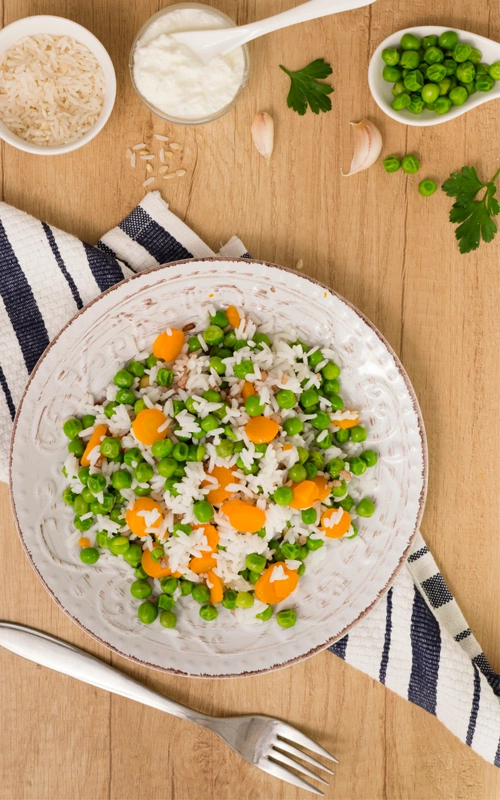

Top Health Benefits of Colorful Veggie Pilaf You Need to Know
This vegetable pilaf is not only a colorful and tasty dish, but it also offers a wide range of essential nutrients. The combination of rice, carrots, and peas provides a balance of carbohydrates, fiber, vitamins, and minerals. Carrots are an excellent source of vitamin A, which is crucial for eye health and immune function, while peas are rich in protein and dietary fiber, promoting digestive health and helping to regulate blood sugar levels. The dish is low in fat, especially if prepared with olive oil, which is a healthy fat known for its heart benefits. This pilaf is a great option for individuals seeking a nutrient-dense meal that is also satisfying and easy to prepare. By including this dish in your diet, you can support your overall well-being with a wholesome, plant-based meal.
Recipe :
For 4 people
This pilaf is a light and nutritious meal that is perfect for healthy diets and active lifestyles due to its fiber, vitamins, and beneficial carbohydrates.
When preparing this dish, it's important to ensure that the rice is properly rinsed before cooking to remove excess starch, which can make the pilaf sticky. Cooking the rice to the right level of doneness is also essential, as it should be fluffy and not too overcooked. When sautéing the vegetables, especially the carrots and peas, be sure not to overcook them to retain their natural texture and nutrients. If you choose to use butter instead of olive oil, it can add a richer flavor, but olive oil offers a healthier alternative. Seasoning is another key element – while salt and pepper are basic, you can experiment with additional herbs and spices like turmeric or cumin to enhance the flavor and nutritional value of the dish. Lastly, for a more protein-rich version, consider adding beans, lentils, or tofu to the pilaf.

This vegetable pilaf is ideal for several popular diets, particularly plant-based ones. It is fully suitable for Vegan and Vegetarian diets, providing essential vitamins, fiber, and plant-based protein from the peas and carrots. It is also naturally Gluten-Free as rice is used as the base, making it a great choice for individuals with gluten sensitivity or celiac disease. However, it is not compatible with Ketogenic diets, as rice is high in carbohydrates, which goes against the low-carb principle of this diet. Additionally, the dish may not be the best fit for Paleo diets since it includes rice, which is generally avoided in this eating plan in favor of more natural, unprocessed foods. It also may not align with the Mediterranean Diet as it lacks significant amounts of healthy fats from sources like fish or nuts. On the other hand, this pilaf fits well within a Low-Calorie diet when portion sizes are controlled, and it can easily be made part of a DASH diet, as it focuses on whole vegetables and low-fat ingredients. However, those on Intermittent Fasting should consider the timing of this meal, as it might be consumed during eating windows to maintain fasting schedules.
...